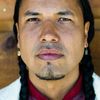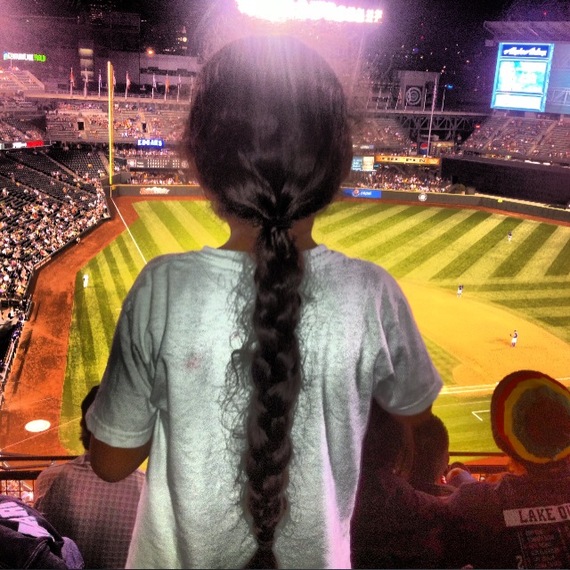"Kill the Indian... save the man." -Army Capt. Richard H. Pratt, founder Carlisle Indian School, in a speech given in 1892
"I would send a troop of United States soldiers, not to seize them [the children], but simply to be present as an expression of the power of the government. Then I would say to these people, 'Put your children in school'; and they would do it." -Jefferson Morgan, Commissioner of Indian Affairs Thomas
Y'know, every once in a while I'll hear someone say something -- in regards to race/race relations/civil rights, etc. -- like "things haven't changed" or otherwise imply that racial animus within the United States is exactly like it was in generations past.
That's dumb.
Of course things are better. It's just that there are certain events that remind us of yesteryear--Ferguson's segregation-era policing tactics, for example. Or Ferguson Police Department's shoot-first and make-the-black-guy-the-patsy practices, as a second example. The Department of Justice declining over 60 percent of sexual violence crimes against women, as a third.
But the fact that these things are news -- as disgusting as they are -- is a sign of progress. In previous times, they wouldn't even be blips on the radar. That's how we know we're making progress in 2014. Still, we get those reminders from time to time.
For Native people, it seems like we get our reminders a couple of times a year. Yeah, sure, just like with any other group of people there are unarmed Natives who get shot by law enforcement officers and vicious abuses of power, like the recent example of the unconscious Native man on the Pine Ridge Indian Reservation who was tasered multiple times by a federal police officer. There are the Native women -- one in three -- who are disproportionately the victims of sexual assault, most times at the hands of non-Natives.
Those things are bad. But still those aren't the reminders of how bad things used to be. No, historically, killing Native people physically was never the battle; disease, huge population disparity, and the United States' commitment to brutal total warfare against Natives and superior arms made the physical victory somewhat an inevitability at some point. The battle, instead, was killing the spirit, the "Indian" within.
And those are the reminders that we get from time to time -- attempts to dominate and kill the Native spirit.
A couple of the United States' tactics, as a matter of historical record, to break the spirit of Native children and to separate them from their home communities was -- through threats of force or through actual force -- to take those Native kids from their homes and cut their long hair. That continues today. Fortunately, there are many people -- Native and non-Native allies alike -- who are dedicated to ending the proliferation of Native kids being taken from their homes through foster kids. Thank God for that.
Kill the Indian... save the man.
The other way that the government historically tried to strip the "Indian-ness" from Indians was by forcefully cutting the hair. The hair represented the untamed nature, the comfort that Native people felt in nature, immersion in a hunter/gatherer worldview and economy. It represented a holistically anti-capitalistic perspective on life -- not needing to fit in to get a job, not fighting against nature to be "presentable." Once again, as a matter of historical record the government didn't think that anti-capitalistic worldview was productive, and set out to change Native people's worldview through force. That "force" included literally killing almost all of Native peoples' traditional food sources, trying to turn them into farmers and making them dependent upon capitalistic economic mechanisms. Markets. Rations.
Kill the Indian.
This stuff is still happening today. I'm not gonna get too deep into the politics of it, but just last week a 5-year-old Native kid named Malachi Wilson got sent home because his hair was too long. The Seminole Independent School District of Texas (of course, it had to be a school district named after a group of Native people famous for non-conformity -- the Seminoles) made young Malachi go home for the day as a violation of the dress code. Ultimately, the school relented and let Malachi return, but the principle that a young kid could be denied his right to education -- in 2014 -- because of his hair... well, it seems anachronistic. A throwback. But in a bad way. Like "three black cops in a town that is almost 70 percent black bad way."
We gotta do better than that. Malachi Wilson isn't Michael Brown -- God bless his family and the town of Ferguson -- but both of these cases are this Nation repeating some of the worst parts of history again. We have too much to lose for that -- we can't go backwards. It's way too late for these kinds of things to keep on happening.
Gyasi Ross is a father, an author and an attorney. He grew up on both the Blackfeet and Suquamish Indian Reservations and continues to work and live within his community. He is the author of two books, How To Say I Love You In Indian and Don't Know Much About Indians (but i wrote a book about us anyways), both available at www.cutbankcreekpress.com. He also writes his own column for Indian Country Today Media Network called "The Thing About Skins."

